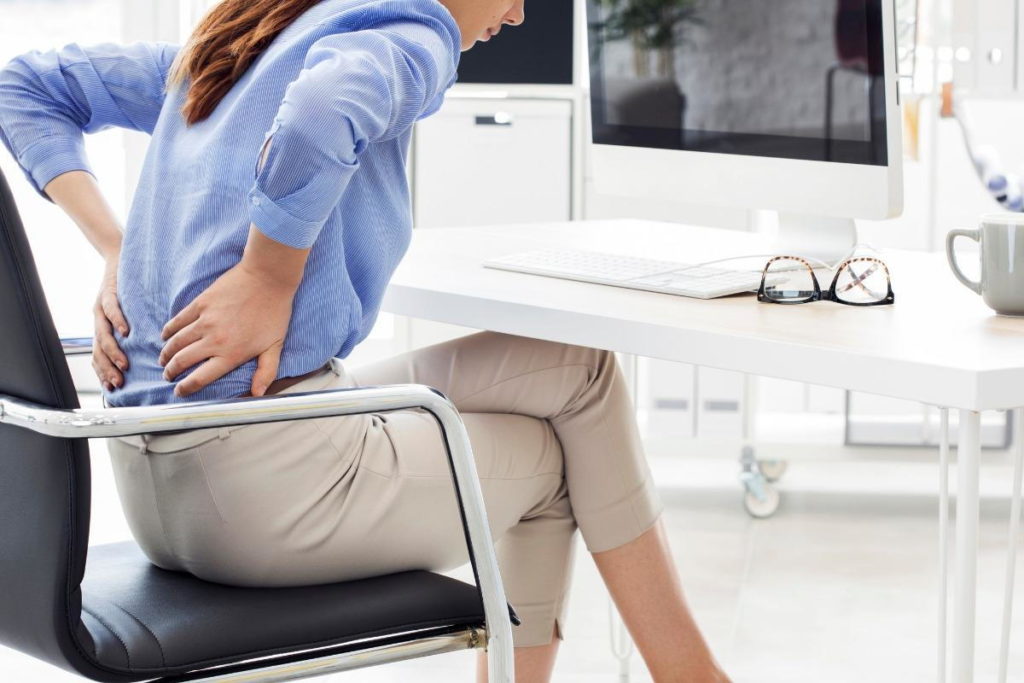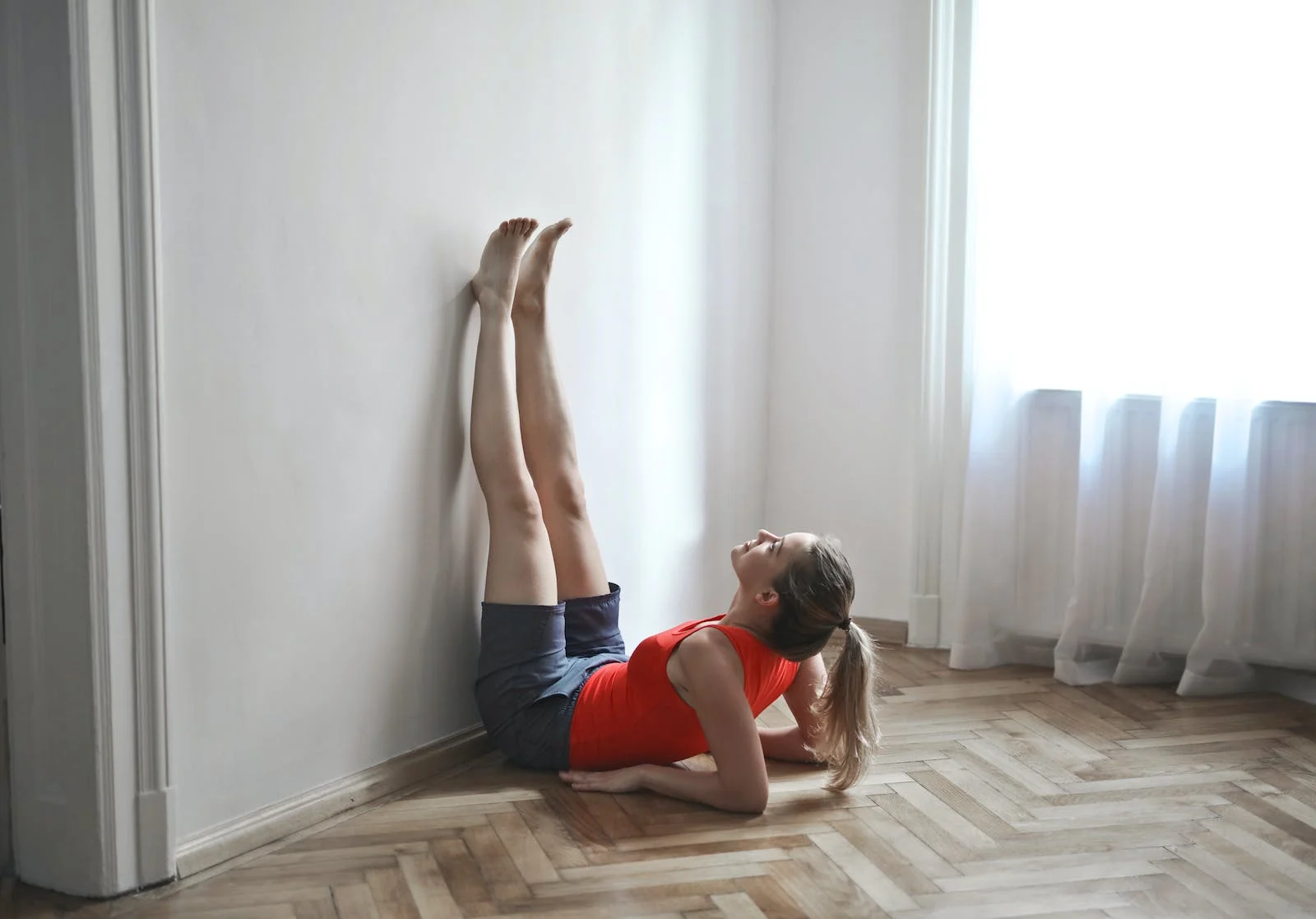The Impact of Sitting on Hamstrings is a crucial aspect of our overall health that often goes unnoticed. The constant sitting that characterizes our modern lifestyle can significantly affect the health and functionality of our hamstrings. These powerful muscles play a vital role in everyday movements, and understanding their function is key to comprehending the implications of prolonged sitting on our bodies.
Hamstrings are a group of three muscles located at the back of the thigh, namely the biceps femoris, semitendinosus, and semimembranosus. They help bend the knee, extend the hip, and provide stability to the pelvis and lower back.
Prolonged sitting can have several effects on the hamstrings. Imbalance and tightness are common issues that arise, leading to postural changes and reduced flexibility. This can result in discomfort, pain, and limited range of motion.
Beyond the impact on the hamstrings, excessive sitting can have detrimental effects on overall health. It increases the risk of musculoskeletal disorders, such as back and neck pain. Poor circulation and impaired glute activation are additional concerns that arise from prolonged sitting.
To counteract the effects of sitting on hamstrings and overall health, several measures can be taken. Regular stretching exercises that target the hamstrings and other muscles can improve flexibility and alleviate tightness. Engaging in physical activity, such as walking or strength training, helps promote mobility and muscle balance. Ergonomic seating and incorporating standing or walking breaks throughout the day can also make a significant difference.
Understanding the impact of sitting on hamstrings is essential in maintaining and improving our overall well-being. By addressing these effects through proactive measures, we can help ensure the long-term health and functionality of our bodies.
Key takeaways:
- Sitting puts excessive strain on the hamstrings: Prolonged sitting can lead to imbalances and tightness in the hamstrings, forcing them to work twice as hard, which can negatively impact overall health.
- Prolonged sitting increases the risk of musculoskeletal disorders: Sitting for long periods of time can increase the risk of developing musculoskeletal disorders, such as lower back pain, due to the strain placed on the hamstrings and other supporting muscles.
- Counteracting the effects of sitting is crucial for overall health: Regular stretching exercises, engaging in physical activity, using ergonomic seating, and incorporating standing or walking breaks can help alleviate the strain on the hamstrings and improve overall health.
The Impact of Sitting on Hamstrings
When it comes to the impact of sitting on hamstrings, it is crucial to comprehend how prolonged sitting can affect these muscles. The act of sitting for extended periods can cause the hamstrings to become tight and shortened, resulting in imbalances within the body. Consequently, this can lead to lower back pain, hip pain, and a decrease in flexibility. To counteract the adverse effects of sitting, it is imperative to include regular stretching exercises that specifically focus on the hamstrings. Engaging in stretching activities can elongate these muscles and enhance overall flexibility, ultimately reducing the risk of injury and discomfort.
What Are Hamstrings?
Hamstrings, also known as the biceps femoris, semimembranosus, and semitendinosus muscles, are a vital group of three muscles located on the back of the thigh. These muscles have multiple functions, including bending the knee, extending the hip, and providing stability during activities like walking, running, and jumping. Understanding the function and anatomy of the hamstrings is crucial for comprehending the impact of prolonged sitting on their health and overall well-being. When remaining seated for extended periods, the hamstrings can become tight and imbalanced, resulting in postural changes, reduced flexibility, and an increased vulnerability to musculoskeletal disorders.
What Are the Functions of Hamstrings?
The hamstrings, comprising of the biceps femoris, semimembranosus, and semitendinosus muscles, have a vital role to play in the proper functioning of our bodies. Found at the posterior part of the thigh, these muscles serve various functions such as hip extension, knee flexion, and stabilization of the pelvis during movement. Engaged in crucial activities like walking, running, and jumping, the hamstrings not only contribute to our mobility but also aid in maintaining balance and an upright posture. These muscles work collaboratively with other muscle groups to ensure stability and minimize the risk of injuries. So, what are the functions of hamstrings? They are significant in facilitating movement and preventing harm to our bodies.
Understanding the Role of Hamstrings
Did you know that sitting for long periods can have a profound impact on your hamstrings? In this section, we will take a closer look at the role of hamstrings in our overall health. We’ll explore how prolonged sitting affects these important muscles and the potential consequences it can have on our well-being. So, buckle up and get ready to discover the eye-opening connection between sitting and the health of your hamstrings!

The Effects of Prolonged Sitting on Hamstrings
Extended periods of sitting can have detrimental effects on the hamstrings, leading to imbalances, tightness, and reduced flexibility. Prolonged sitting causes the hamstrings to become tight and overactive, while the opposing muscles, such as the hip flexors, become weak and lengthened. Additionally, sitting for long hours can result in a slouched posture, causing the hamstrings to shorten and become tighter. This can lead to reduced flexibility in the hamstrings, limiting the range of motion in the hips and legs.
To prevent these detrimental effects, it is important to incorporate regular stretching exercises and engage in physical activity. Using ergonomic seating can also help maintain hamstring flexibility and overall musculoskeletal health. Additionally, taking standing or walking breaks throughout the day can counteract the negative impact of prolonged sitting on the hamstrings. By addressing these factors, individuals can mitigate the negative effects of sitting and ensure the health and flexibility of their hamstrings.
Imbalance and Tightness
Imbalance and tightness in the hamstrings can be caused by prolonged sitting, leading to discomfort and potential injuries. Addressing this issue is crucial for maintaining healthy hamstrings and overall well-being.
- Regular stretching exercises: Perform regular hamstring stretches to naturally improve flexibility and prevent tightness.
- Engaging in physical activity: Incorporate exercises that specifically target the hamstrings, such as lunges and deadlifts, to naturally strengthen and balance the muscles.
- Using ergonomic seating: Invest in ergonomic chairs or adjustable desks to naturally support proper posture and reduce strain on the hamstrings.
- Incorporating standing or walking breaks: Take regular breaks from sitting to naturally stand up, stretch, or take short walks, promoting blood flow and relieving tension in the hamstrings.
By implementing these natural tips, you can effectively counteract the negative effects of sitting, reduce imbalances and tightness in the hamstrings, and improve your overall health and comfort.
Posture Changes
Prolonged sitting can lead to various posture changes that can negatively impact the hamstrings and overall health.
- Tightening: Sitting for extended periods can cause the hamstrings to become tight and shortened, resulting in discomfort and limited flexibility.
- Imbalance: Engaging in imbalanced sitting positions, such as crossing legs or favoring one side, can create muscle imbalances in the hamstrings, leading to further strain and potential injury.
- Alignment issues: Maintaining poor posture while sitting can cause the pelvis to tilt and the spine to round, placing additional stress on the hamstrings and compromising overall spinal alignment.
To counteract the effects of sitting on the hamstrings and posture changes, it is essential to incorporate regular stretching exercises, engage in physical activity, use ergonomic seating, and incorporate standing or walking breaks throughout the day.
Reduced flexibility is just one more reason why sitting for extended periods is a real pain in the hamstring.
Reduced Flexibility
Reduced flexibility is a common consequence of prolonged sitting, particularly affecting the hamstrings. This can lead to muscle imbalances, poor posture, and limited range of motion. To address this issue, consider incorporating the following practices into your routine:
- Regular stretching exercises: Perform stretches targeting the hamstrings to improve flexibility.
- Engaging in physical activity: Incorporate regular exercise, such as walking or jogging, to promote flexibility and overall health.
- Using ergonomic seating: Invest in ergonomic chairs or accessories that support proper posture and reduce strain on the hamstrings.
- Incorporating standing or walking breaks: Take breaks throughout the day to stand up, stretch, or walk around, allowing your hamstrings to move and stretch.
By implementing these strategies, you can help counteract the negative effects of sitting on hamstring flexibility and promote overall health and well-being. Sit too much, and you’ll have enough back pain to send Dracula running for the sun.
How Sitting Affects Overall Health
Did you know that the simple act of sitting can have a profound impact on your overall health? In this section, we’ll explore how prolonged sitting affects various aspects of our well-being. From increased risks of musculoskeletal disorders to lower back pain, poor circulation, and impaired glute activation, we’ll uncover the potential consequences that sitting can have on our bodies. Let’s dive into the eye-opening reality of how our sedentary habits can influence our health in unexpected ways.
Increased Risk of Musculoskeletal Disorders
Preventing Take Action While Sitting
Extended periods of sitting can potentially lead to an increased risk of musculoskeletal disorders. It is important to address this issue to avoid any negative repercussions.
- The sedentary nature of prolonged sitting can cause muscle imbalances and tightness in the hamstrings, which may contribute to poor posture and potentially result in lower back pain.
- Furthermore, prolonged sitting can lead to reduced flexibility and impaired glute activation.
To mitigate the harmful effects of sitting, it is essential to incorporate certain measures into your routine:
- Regular stretching exercises: Incorporate a stretching routine to improve muscle imbalances and flexibility.
- Engaging in physical activity: Make sure to engage in regular physical activity to counteract the sedentary nature of sitting.
- Using ergonomic seating: Invest in ergonomic seating options to promote better posture and reduce the risk of musculoskeletal disorders.
- Taking standing or walking breaks: Remember to take regular standing or walking breaks throughout the day to avoid prolonged sitting and promote circulation.
By adopting these strategies, you can significantly reduce the risk of musculoskeletal disorders associated with prolonged sitting. Make sure to prioritize your well-being and incorporate these actions into your daily routine.
Lower back pain is the uninvited guest that arrives when you let your hamstrings take over the seating arrangement.
Lower Back Pain
Sitting for extended periods of time can contribute to lower back pain, which is a common issue caused by tight hamstrings. When sitting, the hamstring muscles are in a shortened position for a prolonged duration, resulting in muscle imbalances and reduced flexibility. This can strain the lower back and increase the likelihood of developing musculoskeletal disorders. To mitigate these effects, it is beneficial to regularly engage in stretching exercises, participate in physical activities, use ergonomic seating, and incorporate standing or walking breaks. These proactive measures can help alleviate lower back pain and maintain the flexibility of the hamstrings, ultimately promoting overall health and well-being.
Poor Circulation
Poor circulation is a common consequence of prolonged sitting on hamstrings. The act of sitting for extended periods can restrict the proper flow of blood to the legs, ultimately resulting in poor circulation. This condition can manifest in various ways, such as numbness, tingling sensations, and even muscle cramps. To counteract the negative impact of poor circulation, it is advisable to incorporate regular movement breaks into your routine. Engaging in stretching exercises or taking occasional standing/walking breaks can effectively combat this issue. Additionally, participating in physical activities beyond your sitting hours can significantly enhance blood flow. Utilizing ergonomic seating options and maintaining proper posture can also alleviate some of the detrimental effects on circulation. Always remember, taking frequent breaks from sitting is vital in maintaining healthy circulation in your legs.
Who needs squats when sitting is already giving your glutes a complete vacation?
Impaired Glute Activation
Impaired glute activation is a common issue caused by prolonged sitting. When individuals sit for extended periods, their glute muscles can become inactive and weak, resulting in poor muscle activation and imbalance. This can lead to lower back pain, discomfort in the hips, and a decrease in athletic performance. To counteract impaired glute activation, it is crucial to include exercises that specifically target and strengthen these muscles. Some examples of such exercises include hip thrusts, glute bridges, and squats. Additionally, engaging in regular physical activity, utilizing ergonomic seating, and taking breaks to stand or walk can significantly improve glute activation and overall muscle function.
In the early 1900s, doctors observed an increase in lower back pain and hip issues among individuals who held desk jobs. As they investigated further, they realized that prolonged sitting caused impaired glute activation, exacerbating these problems. This newfound knowledge prompted the development of exercises and ergonomic solutions that aim to counteract the detrimental effects of extensive sitting on the glute muscles. Nowadays, with a heightened awareness of the issue, people are taking proactive measures to strengthen their glutes and prioritize their overall well-being.
Sitting may be sedentary, but it’s no vacation for your hamstrings – give them a break with these tips!
Tips to Counteract the Effects of Sitting on Hamstrings
Sitting for long periods can seriously strain our hamstrings, and this section offers effective tips to counteract those negative effects. We’ll dive into the importance of regular stretching exercises and engaging in physical activity to keep our hamstrings healthy and strong. We’ll explore the benefits of using ergonomic seating and incorporating standing or walking breaks throughout the day. Say goodbye to the discomfort caused by sitting too much and take control of your hamstring health with these practical strategies!
Regular Stretching Exercises
Regular stretching exercises can be really beneficial in reducing the negative effects of sitting for long periods of time on your hamstrings. If you’re looking to incorporate regular stretching exercises into your routine, here are a few steps you can follow:
1. Hamstring stretch: Start by sitting on the edge of a chair and extend one leg straight in front of you. Slowly lean forward, reaching for your toes. Hold this position for 30 seconds and then repeat the stretch with the other leg.
2. Standing hamstring stretch: Stand with one foot slightly in front of the other. Bend forward at the hips, reaching towards your toes. Hold this stretch for 30 seconds and then switch to the other leg.
3. Lunge stretch: Take a step forward with one foot and bend your knee, while keeping the other leg straight behind you. Lean forward and feel the stretch in the hamstring of the back leg. Hold this stretch for 30 seconds and then repeat it with the other leg.
4. Seated hamstring stretch: Sit on the ground with your legs extended in front of you. Reach forward towards your toes, while keeping your back straight. Hold this stretch for 30 seconds.
By following these steps, you’ll be able to incorporate regular stretching exercises into your routine and help counteract the negative effects of prolonged sitting on your hamstrings.

Engaging in Physical Activity
Engaging in Physical Activity is essential in order to counteract the negative effects of sitting on hamstrings. Here are a few natural ways to incorporate physical activity into your daily routine:
– Participate in cardiovascular exercises such as running, swimming, or cycling. These activities not only improve blood circulation but also strengthen your hamstrings.
– Integrate strength training into your workout regimen by including exercises like squats, lunges, and deadlifts. These movements specifically target the muscles in your lower body, including the hamstrings.
– Incorporate practices like Yoga or Pilates into your routine. These disciplines focus on enhancing flexibility, balance, and core strength, effectively reducing tightness in the hamstrings.
– Engage in sports or recreational activities like soccer, basketball, or tennis. These enjoyable activities provide movement and allow you to challenge your hamstrings in a fun and stimulating way.
By consistently engaging in physical activity, you can effectively maintain the health and flexibility of your hamstrings, thus minimizing the adverse effects caused by prolonged sitting. Sit your way to stronger hamstrings with ergonomic seating.
Using Ergonomic Seating
By using ergonomic seating, you can significantly enhance comfort and alleviate strain on the hamstrings, thereby promoting overall health and preventing musculoskeletal disorders associated with prolonged sitting.
- Invest in chairs with adjustable seat height, backrest, and armrests to find the most comfortable and supportive position.
- Choose chairs with built-in lumbar support or use additional lumbar cushions to maintain the natural curve of your lower back and reduce strain on the hamstrings.
- Opt for chairs with ample padding to distribute your weight evenly and prevent pressure points on the hamstrings.
- To minimize strain on the hamstrings, ensure you sit with your feet flat on the floor, thighs parallel to the ground, and back fully supported against the backrest.
Incorporating Standing or Walking Breaks
Incorporating standing or walking breaks into your daily routine can help counteract the negative effects of sitting on your hamstrings and overall health. Here are some steps to incorporate standing or walking breaks effectively:
- Set a timer or reminder to take breaks every 30 minutes to an hour.
- Stand up and stretch your hamstrings, reaching down towards your toes.
- Take a short walk around your workspace or office building.
- Combine standing and walking breaks by using a standing desk or taking walking meetings.
- Engage in active hobbies or exercises during your breaks, such as walking or jogging.
- Choose stairs over elevators whenever possible to promote movement.
By incorporating these standing or walking breaks throughout your day, you can give your hamstrings a break from prolonged sitting and improve your overall health and well-being.
Some Facts About How Sitting is forcing your Hamstrings to work twice as much: What it means for your overall health:
- ✅ Prolonged sitting can lead to the overwork of your hamstrings. (Source: Dr. Elan Goldwaser)
- ✅ Weak gluteal muscles from sitting for long periods can cause the hamstrings to compensate, leading to potential injury. (Source: Harvard Health)
- ✅ Tight hamstrings, caused by weak glutes, are at risk for injury during sudden bursts of energy. (Source: Harvard Health)
- ✅ Overloaded hamstrings due to weak glutes can result in muscle strains that may require surgery. (Source: Harvard Health)
- ✅ Keeping all leg muscles healthy and working together, including the glutes and quadriceps, is crucial to protect the hamstrings. (Source: Harvard Health)
Frequently Asked Questions
How does sitting for long periods of time affect our bodies?
Sitting for extended periods of time can decondition our bodies and increase the risk of injury. It can lead to poor posture, strain on the neck and lower back, bulging or herniated discs in the lumbar vertebrae, biomechanical instability, weak hips, hip pain, knee pain, and even sciatica.
What are the dangers of poor posture while sitting?
Poor posture while sitting can strain the neck, leading to tension, tightness, and pain. It also puts strain on the lower back, causing arching forward, which can lead to chronic pain and discomfort.
How does sitting too much affect the hamstrings?
Sitting for prolonged periods weakens the gluteal muscles and tightens the hip flexor muscles. This can overload the hamstrings, forcing them to work harder and potentially leading to tightness and increased risk of injury.
Can weak hips affect the rest of the body?
Yes, weak hips can have a significant impact on the rest of the body. Weak hips can cause the legs to collapse inward, putting pressure on the kneecaps and causing the feet to flatten. This can lead to hip pain, knee pain, and even sciatica.
How can I protect my hamstrings from injury due to sitting?
To protect your hamstrings, it is important to keep all leg muscles healthy and working together, including the glutes and quadriceps. A physical therapist can evaluate your muscles and joint health and develop a personalized workout program to strengthen the necessary muscles.
Can sitting too much lead to muscle strains in the hamstrings?
Yes, sitting for long periods and having weak gluteal muscles can overload the hamstrings, putting them at risk for injury. Muscle strains, ranging from mild to severe, can occur, and in some cases, surgery may be required for treatment.

